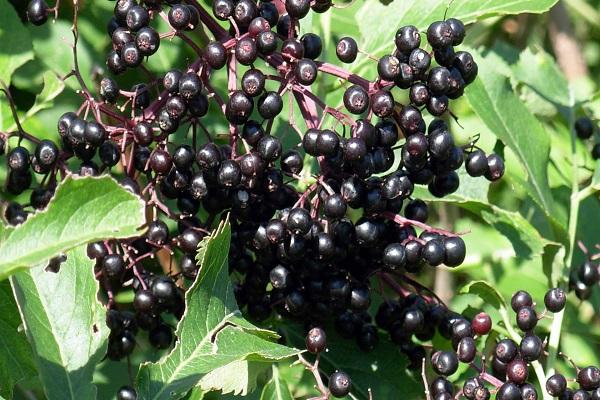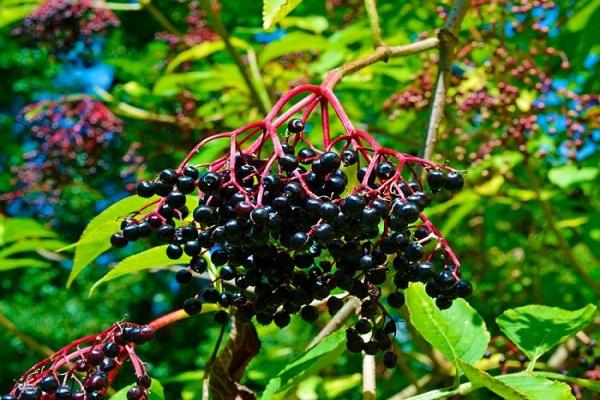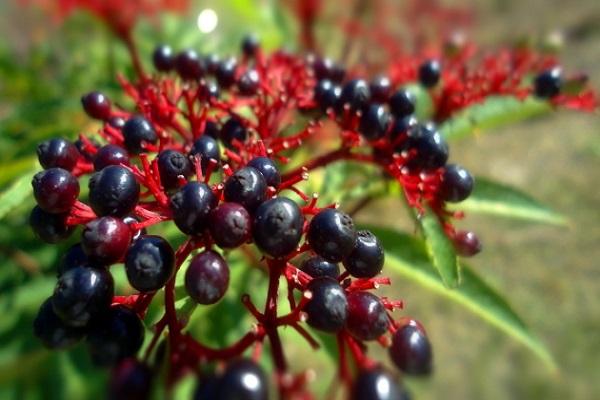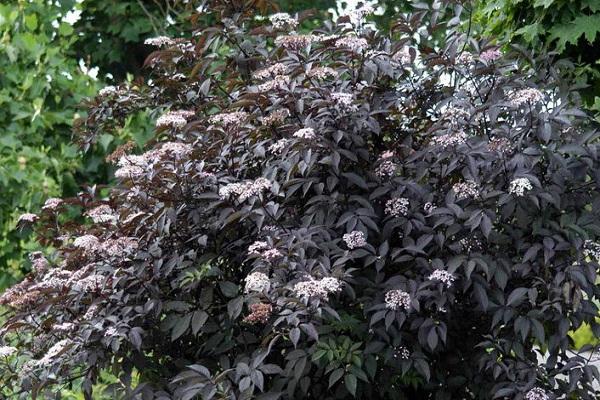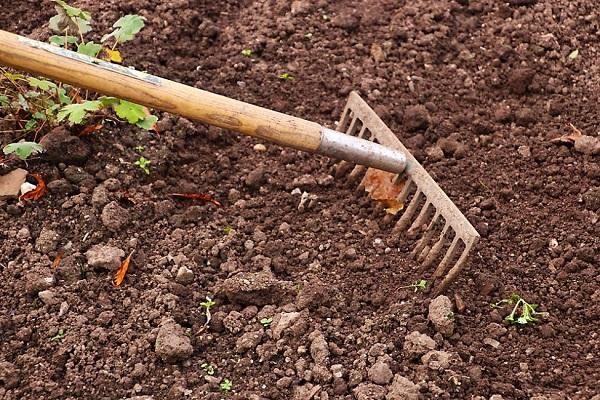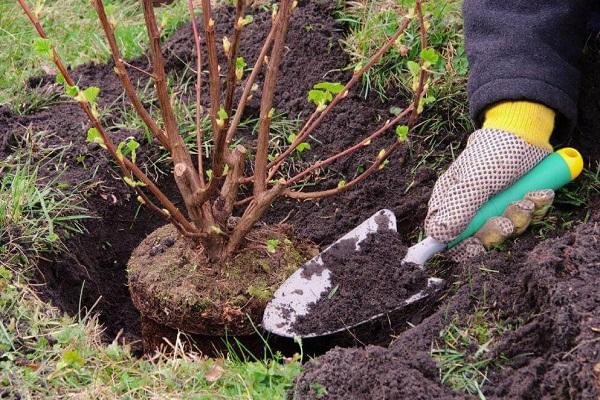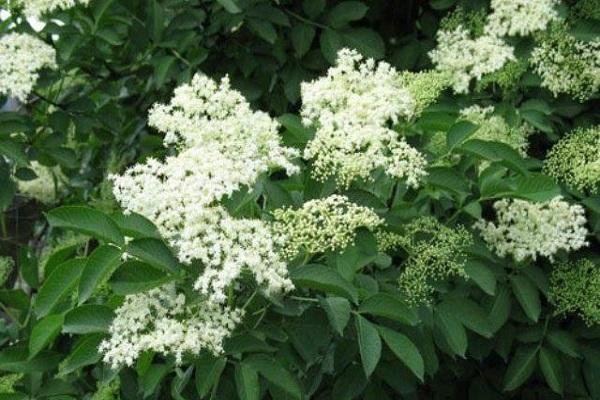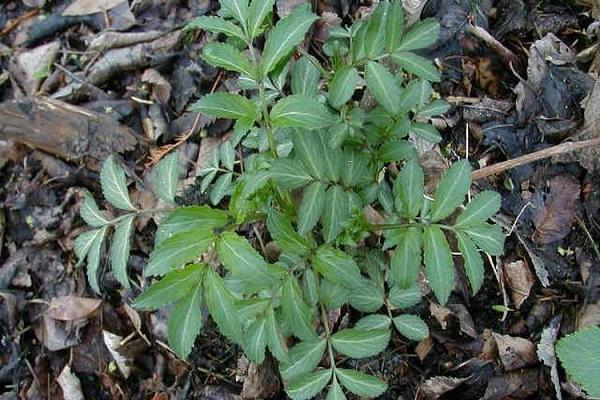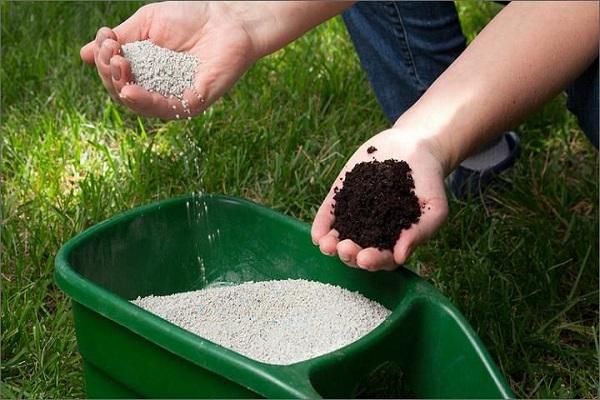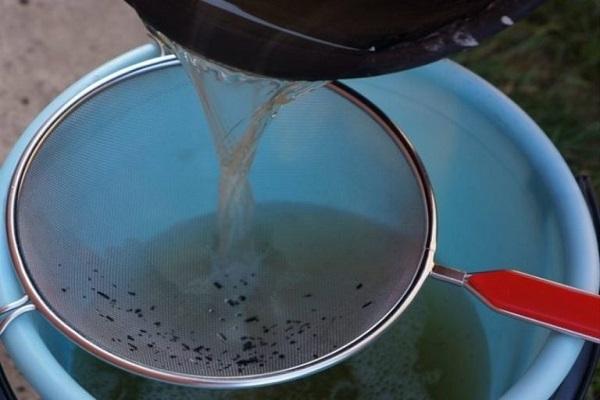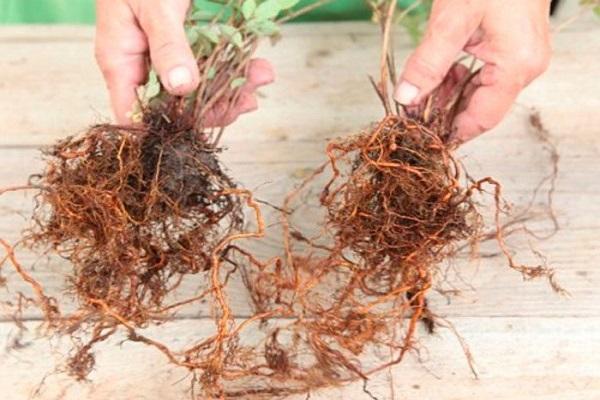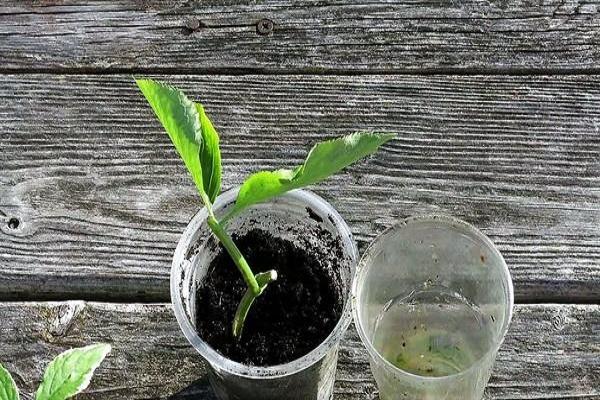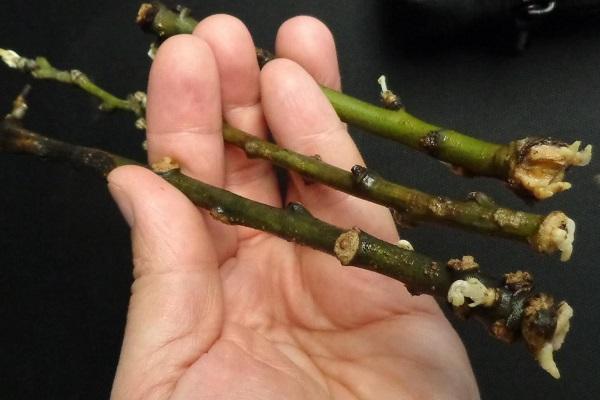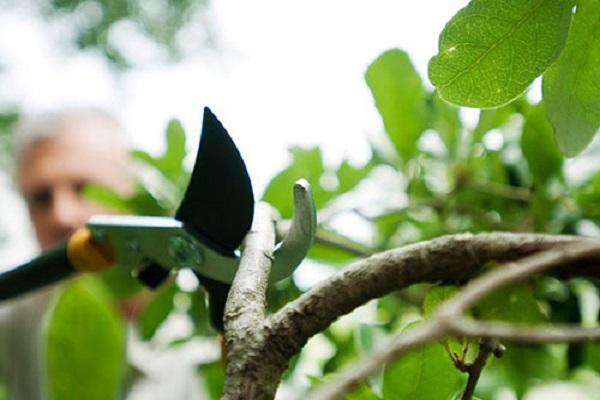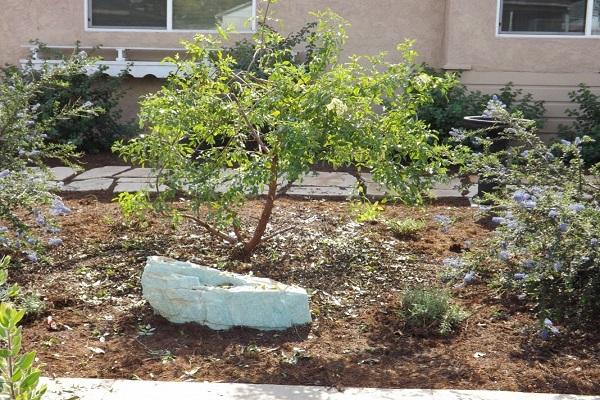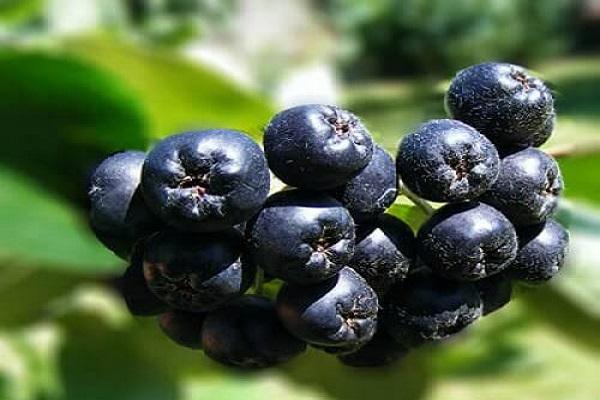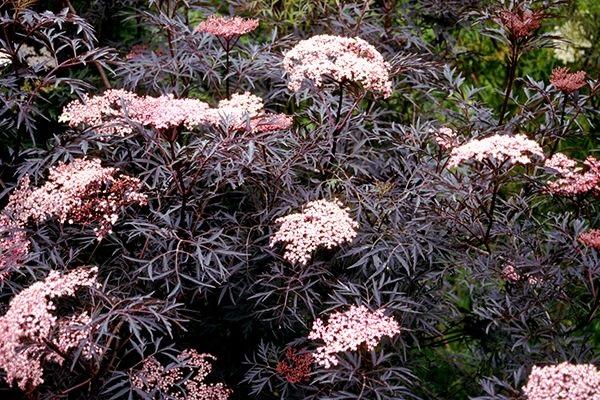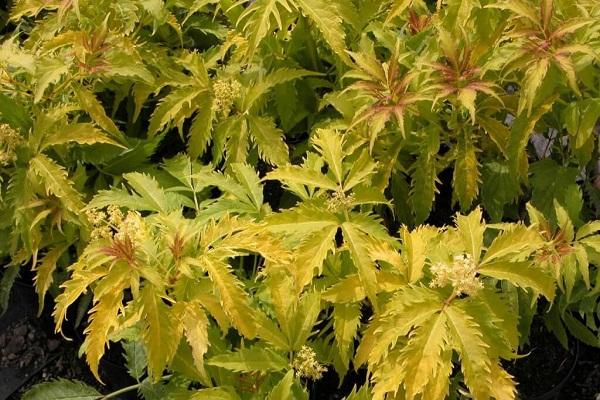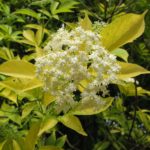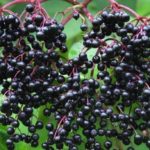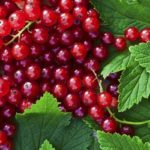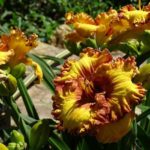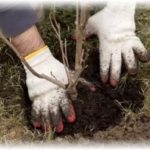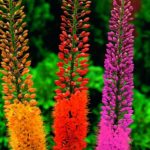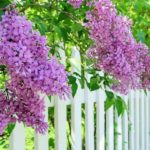Elderberry is a plant that is confidently gaining popularity among owners of private plots. Decorative bushes skillfully fit into the most bizarre landscape. Difficulties with growing rarely arise, but it is better to first familiarize yourself with the characteristics of elderberries, care and planting, and the characteristics of the shrub.
- Technical description of the plant
- Resistance to low temperatures and droughts
- Immunity to diseases
- External parameters
- Shrub sizes
- Branching of the root system
- Flowering and fruiting
- How to plant elderberry in open ground
- Disembarkation dates
- Advantageous neighborhood
- Suitable soil and hole dimensions
- Technology of planting and caring for seedlings
- What you need for good growth and productivity
- Regularity of irrigation
- Fertilizer application
- Formative pruning
- Pest control and disease prevention
- How to propagate an elderberry bush
- Seeds at home
- Cuttings
- Method of propagation by layering
- Dividing the bush
- Elderberry grafting
- What can you vaccinate on?
- Technology and timing of work
- Tree care after the procedure
- Popular varieties
- Red elderberry
- Black
- Yellow
- White
Technical description of the plant
Elderberry is an unpretentious plant that easily adapts to climatic conditions, but it is better to know the characteristics of the shrub in advance. For residents of cool regions, it is important to understand immunity and frost resistance.
Resistance to low temperatures and droughts
The shrub tolerates low temperatures and will not die even at 30 degrees below zero. Young plants will have to be covered for the winter; seedlings often freeze out.
The plant is not afraid of drought, but it is better not to check the survival of elderberry; in extreme heat without moisture, the bush loses its decorative appearance. In the absence of watering, the leaves curl, turn yellow, and even fall off.
Immunity to diseases
Elderberry rarely gets sick. If you do not forget about preventive treatments, the shrub will rapidly grow and develop, bloom luxuriantly and bear useful fruits.
External parameters
Elderberry is a lush shrub or tree. The plant is distinguished by longevity; with proper care, it will inflate the eye up to 60 years. It is a partially poisonous crop; its leaves, young shoots, and bark contain a small amount of toxins. Despite this, plant materials are often used in folk medicine to prepare ointments and infusions.
Shrub sizes
The height of the elderberry is up to 4 m. The diameter of the bush is up to 3 m.To get a compact plant, you will have to do regular pruning. Some varieties do not differ in size; the height of adult bushes does not exceed 1 m. Dwarf varieties are used to decorate flower beds; in gardens they are easily replaced by large specimens of the plant kingdom.
Branching of the root system
The rhizome is long, reaches 5 m, and has many lateral shoots. The roots penetrate deep into the layers of soil, so in extreme conditions the elderberry is able to independently obtain moisture so as not to die. Some roots run close to the surface, so when loosening it is better not to go deep into the ground.
Flowering and fruiting
The flowers of the plant are small, collected in small white inflorescences. Some varieties are distinguished by pink blooms. Thanks to its persistent aroma, elderberry serves as an excellent honey plant; bees flock to the smell with pleasure. Pests of fruit plants do not like the smell of elderberries, so insects rarely settle even on nearby plants. Some gardeners specifically plant elderberries in the garden to protect fruit trees and shrubs from pest invasion.
Flowering occurs in the last month of spring or early summer. Fruiting begins in mid-July and continues until August. The fruit of the bush is a glossy berry. Depending on the variety, the shade of the fruit varies from purple to blue-black.
How to plant elderberry in open ground
There will be no particular difficulties with planting elderberries; the process is no different from planting ornamental shrubs. The main thing is to comply with the deadlines, purchase a high-quality seedling, and prepare the soil. It would be a good idea to choose a cozy place for the plant.You should take care of a sunny area without access to drafts; gusts of wind can damage the branches of the bush.
Disembarkation dates
It is better to plant elderberries in the spring, before the juice begins to flow. Wait until the frosts are completely gone; temperature fluctuations can damage young plants. If you fail to guess the timing, it is better to cover the bushes with agrotextiles at night. In warm regions, it is recommended to carry out the process in the fall; before the onset of cold weather, the bushes will have time to take root and prepare for frost. Be sure to use shelter; young plants can die even with a slight drop in temperature.
Advantageous neighborhood
Do not plant shrubs near trees with a lush crown; the lack of light will affect the condition of the elderberry, and the plant will lose its decorative appearance. It is important to grow variegated species in sunny areas; the patterns on the leaves in the shade will quickly disappear.
Elderberry looks beautiful in group plantings. It is recommended to use different varieties for planting - variegated, white, red. Be sure to first familiarize yourself with the characteristics; it is better to combine plants not just by appearance, but also by crown diameter and size of an adult plant.
It is not recommended to plant dwarf and tall varieties nearby - the giants will certainly destroy their smaller brothers.
Suitable soil and hole dimensions
Elderberry prefers light, nutritious soils. If the soil on the site is poor, it is recommended to prepare the mixture yourself. Mix:
- peat;
- garden soil;
- sand (coarse, river);
- garden soil.
It is better not to use compost, but to put a thick layer as mulch.
The roots of the seedling have a small diameter, so the dimensions of the hole do not exceed 50 by 50 cm.
Technology of planting and caring for seedlings
Before planting, it is recommended to soak the roots of the seedling. Use a stimulant solution or a clay mash (400 g of clay per bucket of water).
When planting, make sure that the roots do not break and straighten the shoots. Gently sprinkle with soil, after each portion of soil, carefully shake the seedling, which will fill all the voids between the shoots. Be sure to keep an eye on the root collar. It should not go deep into the ground or rise too high above the surface of the earth. Ideally, the root collar will be flush with the soil.
Immediately pour water - 10 liters of liquid per bush is enough. Place a mulch layer. After planting elderberries, care is simple - water once every 2-4 days. If the weather is too hot, moisten the soil daily.
What you need for good growth and productivity
If the growing conditions are met, the bush will delight you with a harvest within 2-3 years after planting. Main requirements:
- regular watering;
- introduction of nutritional compounds;
- loosening the soil surface;
- shelter for the winter (in too cold regions);
- pest control;
- preventive treatments.
Another requirement is regular pruning, otherwise the bush will look sloppy and lose its decorative effect.
Regularity of irrigation
It is recommended to water elderberries frequently, especially in the summer. The regularity of watering depends on the weather. If it is too hot, irrigate the soil 3-5 times a week. Use warm water, standing for several hours in the sun. Watering with a hose is not recommended; there is a risk of causing unsightly spots to appear on the leaves.
Watering should be stopped in mid-autumn; the bushes should prepare for winter.Overmoistening the soil before frost will lead to freezing of the root system. Frosts will not cause any particular harm, especially to unpretentious varieties. They will quickly grow with the onset of warmth and quickly grow new roots. More delicate species recover poorly, and some may even die.
Fertilizer application
For fertilizing, use complex fertilizers. Do not overdo it with the addition of nutrients; one fertilizing per month is enough. If compost was used for mulching, fertilizers can be abandoned; useful elements will penetrate into the soil with water.
Some gardeners use homemade fertilizers - an infusion of compost or humus. It is better not to overuse organic matter - two or three applications of fertilizer per season are enough.
Be sure to water the soil thoroughly beforehand so as not to burn the roots passing near the surface.
Formative pruning
It is better to prune in early spring, although it is better to shape old bushes in the fall. Usually, frozen, dry, wind-broken branches are removed. Elderberry can be turned into a standard tree, leaving the main trunk and regularly trimming the side shoots at the bottom of the plant.
Pest control and disease prevention
There is often no need to fight insects; pests are reluctant to invade the plant. Most often, aphids settle on elderberries, against which it is recommended to use an infusion of ash:
- Bring 5 liters of water to a boil
- Pour boiling water over wood ash (500 g).
- Leave for 5-8 hours, tightly closing the container.
- Strain and process the bush.
To get rid of insects you will need up to 3 treatments. To prevent re-infestation by pests, use the infusion for prevention at least once a month.
If the plant is infected with elderberry mite or fly, you will have to resort to chemicals. It is recommended to carry out treatment with Fufanon. Usually, after the first watering of the leaves, the insects disappear, but it is better to re-apply the solution after a week - this ensures that after some time the pests do not occupy the bushes.
Elderberry gets sick extremely rarely, but it is better not to take risks and carry out preventive treatment with copper sulfate every spring. Some gardeners use Bordeaux mixture, which is no less effective at preventing disease infection.
How to propagate an elderberry bush
Reproduction of the bush can be done in several ways - by seed, cuttings and dividing the plant. Some gardeners use layering; elderberry quickly takes root and grows.
Seeds at home
Propagation by seeds is a rather unpopular method, since it will not be possible to preserve all the maternal characteristics of the variety. Growing young plants is easy:
- Collect seeds in the fall.
- Dry the planting material a little.
- Sow the seeds directly into the garden bed (be sure to sprinkle with a 2-4 cm layer of soil).
- Cover with a thin layer of compost.
In the spring, remove the compost immediately after the onset of warm weather. Sprouts will appear quite quickly. Caring for young plants is simple - watering and regular loosening of the soil. Replant to a permanent location after a year.
Cuttings
For cuttings, choose only green annual shoots. Make sure that each branch has at least 2 internodes. It is better to root the cuttings directly in the soil (use a mixture of peat and sand). Build a greenhouse from polyethylene or glass. Monitor the moisture content of the substrate and moisten it regularly.
If propagation is carried out by woody cuttings, it is better to leave them in a cool basement until spring.With the onset of warmth, plant immediately in the beds, having previously prepared a nutrient substrate. It’s easy to care for cuttings - water, remove weeds, loosen the soil.
Method of propagation by layering
After the leaves appear, elderberry can be propagated by layering. Select several healthy shoots, prepare shallow grooves, and lay out bush branches. Be sure to secure with wire. Sprinkle one of the internodes with soil and moisten it regularly. Roots will appear in mid-summer.
Don’t rush into replanting—it’s better to separate the young plant from the mother bush the next year.
Dividing the bush
When transplanting an adult plant, it is recommended to use division. Divide the elderberry into several sections, being careful not to damage the roots and branches. This cannot be done by hand; it is better to use a sharp shovel. Be sure to dry each section a little and then plant it in a permanent place.
Elderberry grafting
Elderberry grafting is rarely carried out, despite its endurance, the plant does not tolerate such procedures well. It is recommended to cross different varieties, which can improve fruiting or increase decorativeness.
What can you vaccinate on?
To reduce the risk of plant death, it is better to graft on standard plants. Usually dwarf elderberry or weeping varieties are used. You can experiment with other species, but only if you have experience, otherwise the attempt to get a new plant will end in failure.
Technology and timing of work
It is better to vaccinate in spring or early autumn. The top is cut off from a standard tree, several cuttings are inserted under the bark (be sure to cut at an acute angle). Carefully cover the joints with varnish and wrap with film or electrical tape. Leave for several months.
Tree care after the procedure
It is easy to care for a grafted tree - water and loosen the soil. Do not fertilize during the first year after vaccination. Only after the elderberry begins to actively grow should complex fertilizers be applied.
Popular varieties
Despite the vastness of the family, only some types of elderberry are used for cultivation in private plots. Before purchasing a seedling, it is better to familiarize yourself with the characteristics of each variety.
Red elderberry
A distinctive feature of the varieties is their inedible fruits. The most popular species are Nana, Purpurea, Flavescens. Bushes are usually planted only for decoration. They tolerate pruning well and easily take the desired shape. They withstand unfavorable conditions (drought, severe frosts) well.
Black
Black elderberry has the largest number of species. Typically, these are the varieties that are planted if you want to get a harvest whose fruits are sweet, tasty, and aromatic.
The most popular types:
- Black beauty. It is considered one of the most beautiful varieties. Pink flowers collected in lush inflorescences and purple foliage are the distinctive features of the species. The berries are black and purple, used for making desserts and canning.
- Black lace. Dissected leaves are a feature of the variety. From spring the foliage has an emerald hue, by the end of summer it is almost black. The flowers are pink in color and have an exquisite lemon aroma. The berries are delicious.
- Aurea. A distinctive feature of this variety of elderberry is its yellow leaves, which can change depending on the amount of sun - in the shade they become darker, almost orange.
- Laciniata. The leaves of the variety resemble oak foliage - openwork, beautifully shaped.The flowering is white, not very elegant, but looks very beautiful against the background of emerald foliage. Usually grown for decoration, the fruits are small and not too juicy, so they are used only for preservation.
- Madonna. A gorgeous variegated elderberry with green leaves edged with a wide yellow edge. The flowers are golden, collected in large inflorescences. The fruits are small and are often used for processing. The variety is afraid of severe frosts, although it quickly recovers after freezing.
- Lace. The variety has beautiful leaves, heavily dissected, changing color throughout the season. In spring the bush is dark green, but before autumn it displays black and purple leaves. The traditional color of the flowers is light pink. The fruits are quite large, black, edible.
- Eve. It has a spreading crown, the leaves are dark purple in color. The foliage has an exquisite openwork shape. The inflorescences are pink, up to 20 cm in diameter. The fruits are large. The plant tolerates pruning, drought, and low temperatures well.
Before purchasing a seedling, it is better to find out how the plant tolerates unfavorable conditions; some species do not do well in cold regions.
Yellow
There are several types of elderberry, which are distinguished by a special shade of leaves - yellow. One of the most popular among gardeners is Aurea variegata. The shrub boasts variegated golden foliage. If you plant the variety in a sunny place, it is easy to make the shades brighter and more attractive.
Another yellow-leaved elderberry is Luteovariegata. In spring, rich yellow leaves bloom on the bushes, which fade a little over the summer and acquire a light, almost white color. The inflorescences are pink and quite large. The fruits ripen at the end of summer.The berries are small and suitable for use in cooking.
White
Another curiosity among elderberry varieties is white Argentia. The leaves are almost white, with several green spots on the surface of each of them. If you plant the bush in a sunny place, the greenery almost disappears. The variety looks very attractive among green shrubs; some owners of private plots plant the variety in flower beds. The flowers are white in color and therefore invisible among the foliage. The fruits are black, not too large.
Elderberry is a plant that can decorate any area. Decorative bushes look attractive against the background of green trees. If you avoid mistakes, you can easily grow a decorative garden decoration that will not require special care. The main thing is to provide the bushes with everything they need, maintain watering, apply fertilizing, and prevent damage from pests or diseases.

